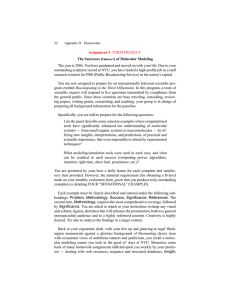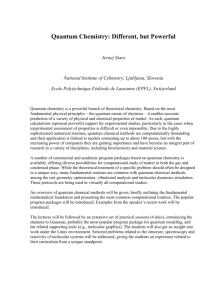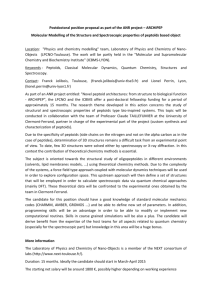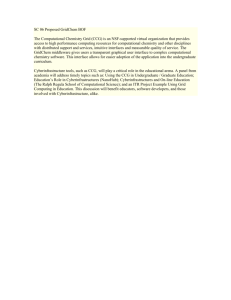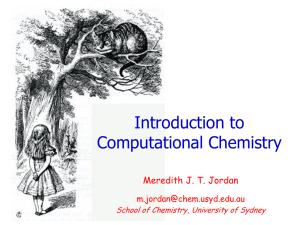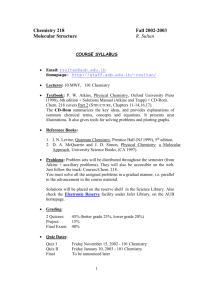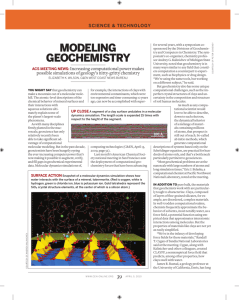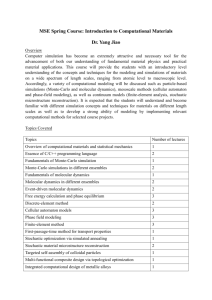Computational Quantum Chemistry Lecturers: Mathieu Linares, Bo
advertisement
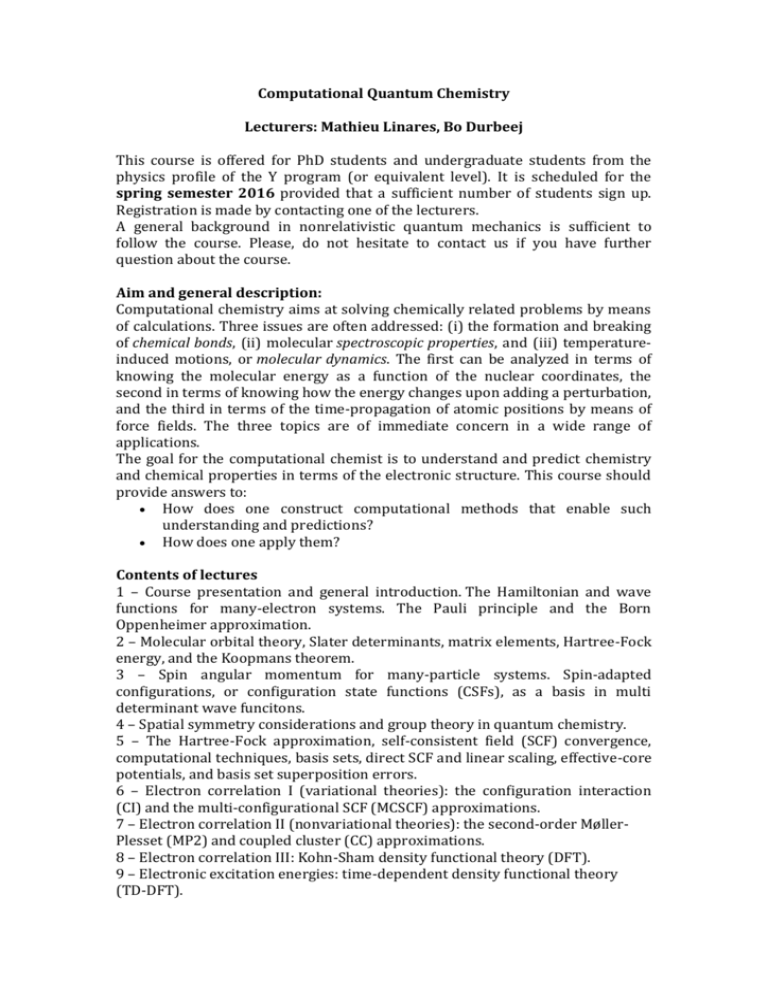
Computational Quantum Chemistry Lecturers: Mathieu Linares, Bo Durbeej This course is offered for PhD students and undergraduate students from the physics profile of the Y program (or equivalent level). It is scheduled for the spring semester 2016 provided that a sufficient number of students sign up. Registration is made by contacting one of the lecturers. A general background in nonrelativistic quantum mechanics is sufficient to follow the course. Please, do not hesitate to contact us if you have further question about the course. Aim and general description: Computational chemistry aims at solving chemically related problems by means of calculations. Three issues are often addressed: (i) the formation and breaking of chemical bonds, (ii) molecular spectroscopic properties, and (iii) temperatureinduced motions, or molecular dynamics. The first can be analyzed in terms of knowing the molecular energy as a function of the nuclear coordinates, the second in terms of knowing how the energy changes upon adding a perturbation, and the third in terms of the time-propagation of atomic positions by means of force fields. The three topics are of immediate concern in a wide range of applications. The goal for the computational chemist is to understand and predict chemistry and chemical properties in terms of the electronic structure. This course should provide answers to: How does one construct computational methods that enable such understanding and predictions? How does one apply them? Contents of lectures 1 – Course presentation and general introduction. The Hamiltonian and wave functions for many-electron systems. The Pauli principle and the Born Oppenheimer approximation. 2 – Molecular orbital theory, Slater determinants, matrix elements, Hartree-Fock energy, and the Koopmans theorem. 3 – Spin angular momentum for many-particle systems. Spin-adapted configurations, or configuration state functions (CSFs), as a basis in multi determinant wave funcitons. 4 – Spatial symmetry considerations and group theory in quantum chemistry. 5 – The Hartree-Fock approximation, self-consistent field (SCF) convergence, computational techniques, basis sets, direct SCF and linear scaling, effective-core potentials, and basis set superposition errors. 6 – Electron correlation I (variational theories): the configuration interaction (CI) and the multi-configurational SCF (MCSCF) approximations. 7 – Electron correlation II (nonvariational theories): the second-order MøllerPlesset (MP2) and coupled cluster (CC) approximations. 8 – Electron correlation III: Kohn-Sham density functional theory (DFT). 9 – Electronic excitation energies: time-dependent density functional theory (TD-DFT). 10 – Potential energy surfaces, transition states, and structure optimization. 11 – Photochemical reactions and conical intersections. 12 – Force fields and classical molecular dynamics. 13 – Monte Carlo methods and quantum mechanical molecular dynamics (the Car-Parinello method). Literature: F. Jensen, Introduction to Computational Chemistry , second edition, Wiley, 2007. The book will serve as official book for the course and gives a good overview of the subject. Grades Homework problems and computer exercises will serve as examination. Participants are given a grade of Pass or Fail – Number of credits: 5 pts.


